Vitra Campus: Why Germany’s design theme park is every architecture-lover’s dream
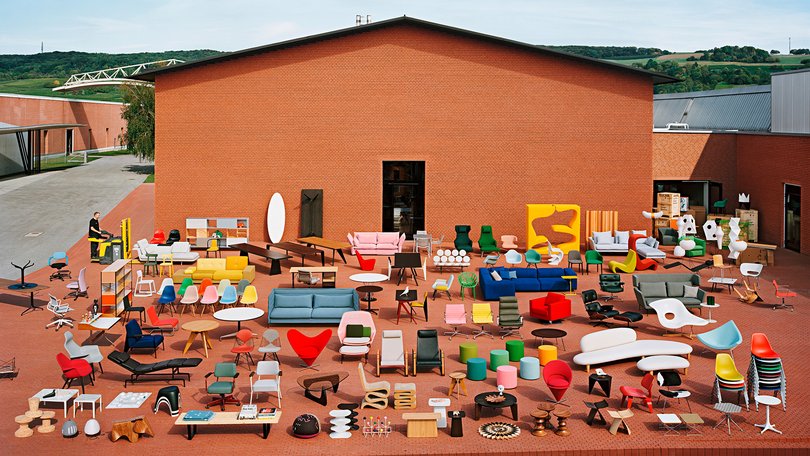
There’s a row of five coloured Charles and Ray Eames moulded fibreglass shell chairs framed by a garden on the edge of the Black Forest in Germany.
A father and son are sitting soaking up the sun. It’s a sight — the ubiquitous chair, outdoors and in use — that prompts some extended thought about the simple joy great design can bring. And it’s not an uncommon at the Vitra Campus in Weil am Rhein, a veritable theme park of design and architecture’s greatest hits.
ROAM has joined a two-hour walking architecture tour of the campus, showcasing some of the world’s best from the past century. Those bold innovators whose creative vision has changed the way we experience and connect with a space.
Head of Vitra, Rolf Fehlbaum, says that the idea was not to create a museum of architecture, it was always about building a place. After all, the primary function of the campus is as a production factory for Vitra, global manufacturer of pieces by Eames, Isamu Noguchi, George Nelson, Verner Panton and Alexander Girard.
ROAM. Landing in your inbox weekly.
A digital-first travel magazine. Premium itineraries and adventures, practical information and exclusive offers for the discerning traveller.
By continuing you agree to our Terms and Privacy Policy.“The task for every architect was to react to what was already there,” Fehlbaum offers. One of the first commissions was for a fire station.
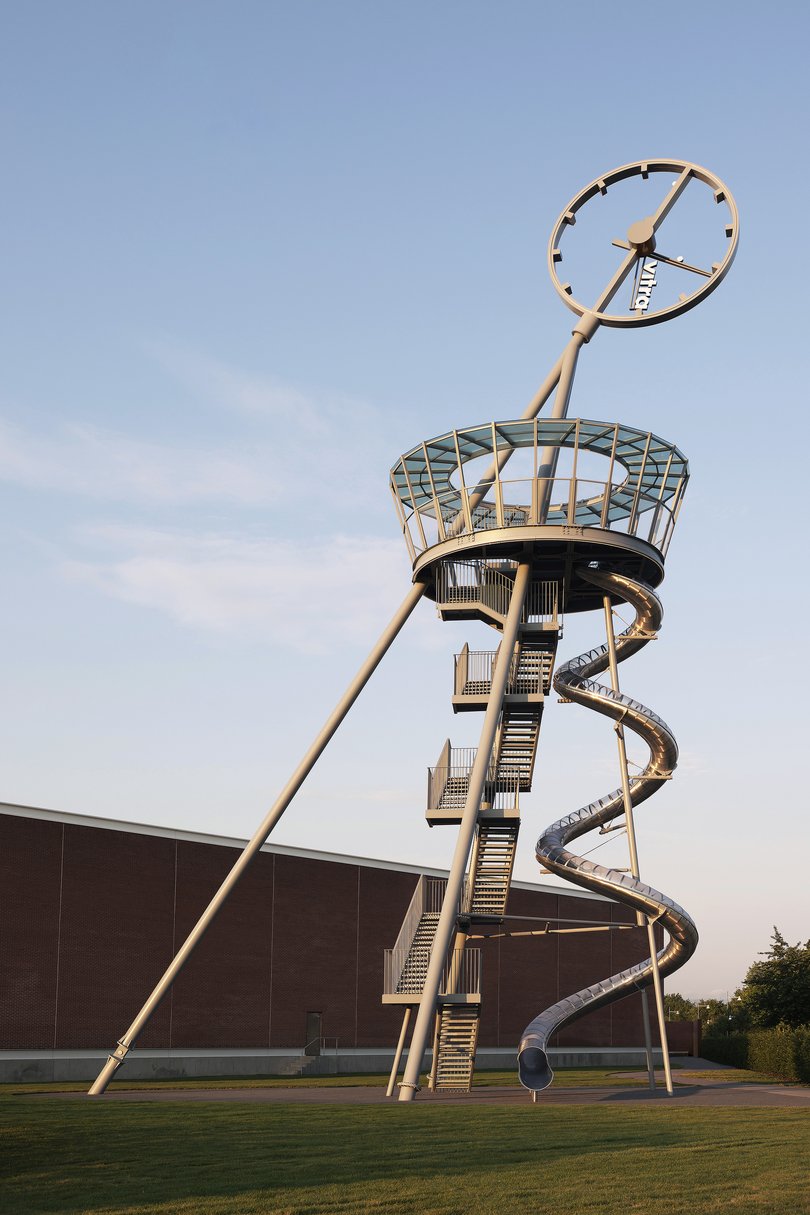
“This was Zaha Hadid’s first ever building,” our guide tells us as he points out the angular, concrete onsite fire station. It was commissioned after a fire tore through the factory after a lightning strike in 1981. It was also the first building complex by the late Pritzker Prize winner, and now serves as an exhibition hall (the government-run fire station is nearby).
Our group, made up of architecture students and amateur design appreciators, is learning about the thinking behind structures such as Japanese architect Tadao Ando’s modernist Conference Pavilion (full of light and curves, influenced by Le Corbusier and framed by cherry trees) to Richard Buckminster Fuller’s geodesic Dome made of steel and acrylic cells. We bypass the museum building by Frank Gehry as they are setting up a temporary Nike exhibition but marvel at the Renzo Piano-designed Diogene workshop, the Jean Prouvé Petrol Station and the walkway designed by Álvaro Siza.
And then there’s the furniture pieces. At VitraHaus, a building designed by Herzog & de Meuron, there’s multiple floors of Vitra products — an installation of Noguchi pendants, rows of colourful Panton chairs, and giant Alexander Girard dolls on display in the window.
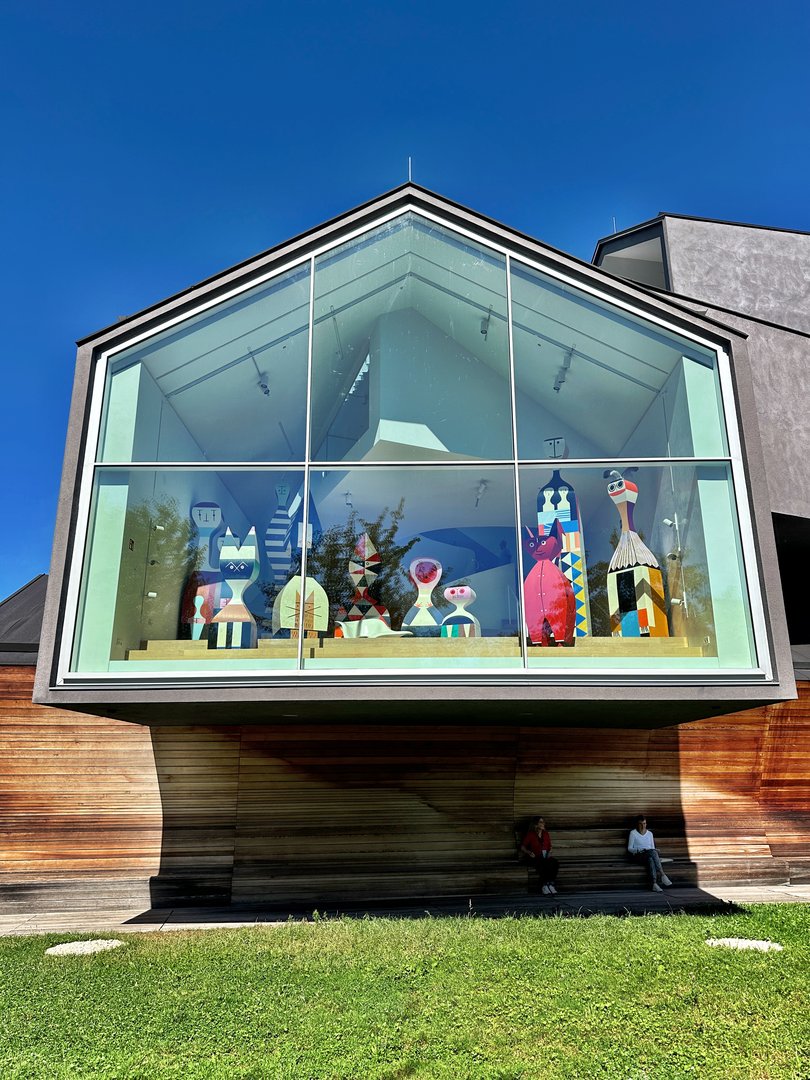
Over at the Vitra Schaudepot building, there’s a permanent exhibition showcasing 7000 pieces of furniture, more than 1000 lighting objects, as well as the estates of several famous designers from 1800 to now.
The Vitra Campus is the sort of place you might want to — and easily could — linger for a couple of days. The Vitra Slide Tower, a 30m high sculptural slide designed by Carsten Holler doubles as a viewing tower — the slide allowing fleeting views of the buildings around you on the journey down.
The gardens, meanwhile, were designed by Piet Oudolf (whose work includes the High Line in New York) using herbaceous perennials with winding paths designed so the visitor can lose themselves in the beauty, rather than just pass through.
It’s here the aforementioned Eames chairs offer a scenic and notable perch, looking out on the glorious scene.
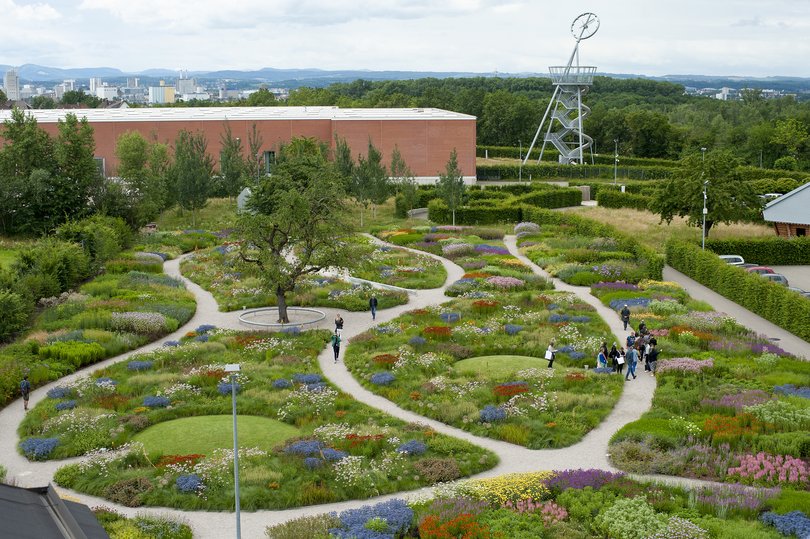
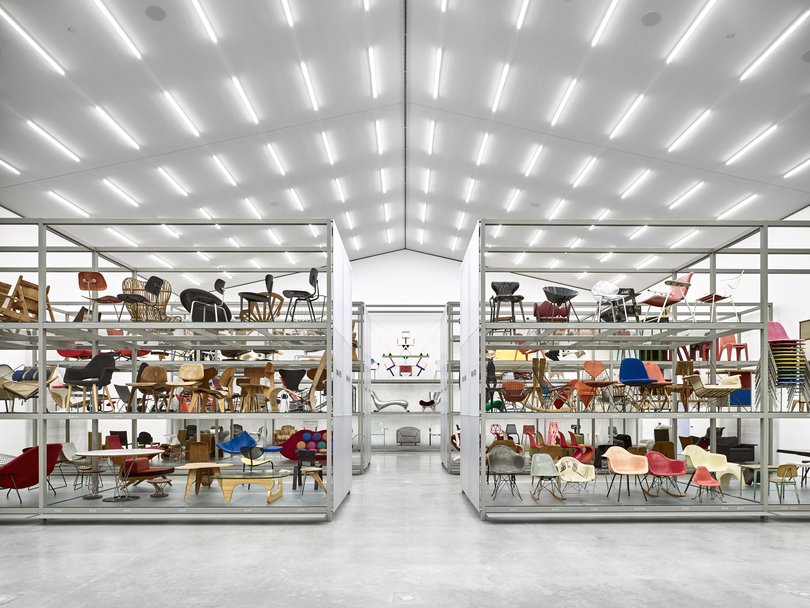
TO KNOW
The Vitra Campus is within easy reach of the Swiss city of Basel — an 11-minute drive or easy e-bike ride (you can park up at VitraHaus using bike sharing rental PubliBike).
Combine a visit to the Vitra Campus with a day exploring Kunstmuseum Basel. And might we suggest timing things to the next Art Basel, June 18-21, 2026.
vitra.com
